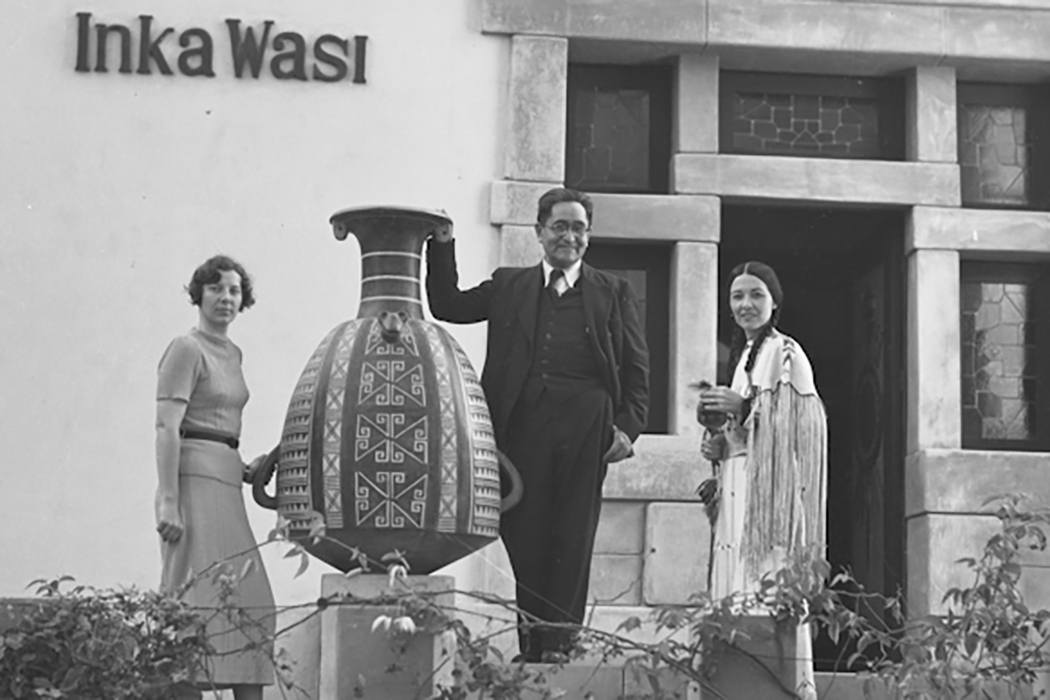On a hot summer night in 1936, Dorothy Bennett, an assistant curator at the Hayden Planetarium in Manhattan in her late twenties, spotted an ad in a newspaper: “TWO COVERED BARGES AND A YACHT TO BE SOLD AT PUBLIC AUCTION.” She began to daydream—not about a yacht, but a barge. As she later wrote, “There would be a deep cool hold, a blistering sundeck, a little cabin. Decidedly, a barge had possibilities.”
The next morning she got on the phone with her roommates and friends Ruhe Linn and Margaret Gibbons, and they went to the auction on their lunch hour. The only place the typical Manhattan working girls knew in Brooklyn was Borough Hall. When they got out of the subway, they approached a cop and pointed to the address in the ad.
“That’s on the Gowanus Canal,” he said, “and it’s no place for ladies.” When they insisted they had to get there, he gave them trolley directions, adding ominously, “Don’t say I didn’t warn you.”
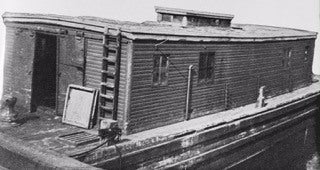
Soon the women were on a Gowanus pier, $160 poorer, and owners of a 60-foot, 40-ton welding barge called the Barnacle. They spent the remainder of the summer restoring it with the help of the junkies, drunks, and captains they met on the canal, as well as their bohemian friends from Greenwich Village. They installed oak doors, used cable spools as coffee tables, and turned life preservers into seats. Friends of Bennett gifted her with a green parrot whom she dubbed Barnacle Bill.
On the Gowanus, the women were outsiders in what was then a dangerous neighborhood. As Bennett wrote in her 1940 book, Sold to the Ladies! or The Incredible but True Adventures of Three Girls on a Barge, “Gowanus Canal…is the most notorious section of the New York harbor…a favorite hangout of longshoremen, prisoners on parole, and pirates.”
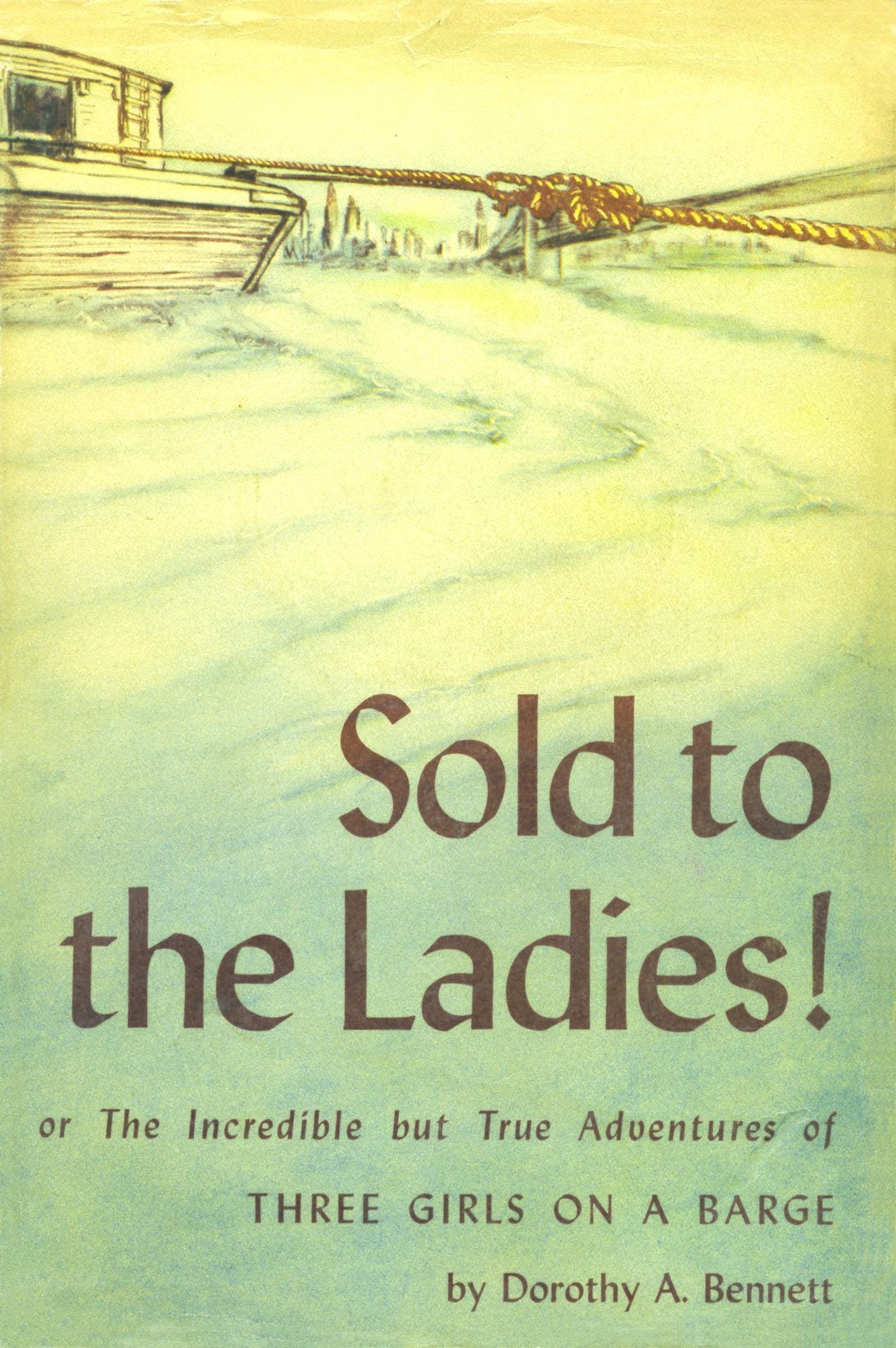
If they had any fears about their new neighbors, however, the women discovered that they were for naught. The junkies and sailors offered labor, gifts, and stories, taking a protective attitude toward the three women. “Every neighbor we knew seemed to feel personally responsible for us,” she wrote, “though many of them constituted the very element of whom our friends were most afraid.”
The barge purchase was only one of many zany adventures in the Zelig-like life of Bennett, whose careers would include author, astronomer, children’s book editor, publisher, and anthropologist. A fearless woman ahead of her time, she had an enduring wonder about the natural world and its cultures. She also had a great spirit of fun and a unique ability to persuade friends and colleagues to come along on her wild and wholly impractical excursions.
Born in 1909 in Minneapolis, Bennett was the only child of Daniel Bennett, an architect, and his wife, Marion. At the University of Minnesota she studied astronomy and anthropology, was president of the Women’s Athletic Association, and graduated with an English degree. After her 1930 graduation, she wanted to go to Africa with an anthropology professor, but he would not take any women. So in the fall of 1930 she moved to New York, like so many before and after her: a college graduate with an English degree and no job.
Her mother had said that if she didn’t find work in 30 days, she had to come back to Minneapolis. Exactly 30 days after her arrival, she was hired as an assistant at the Department of Education at the American Museum of Natural History on the Upper West Side. When Museum Director George Sherwood asked what she proposed as a salary, she was stumped and finally said, “I think I would have to have $100 a month.”
Sherwood replied, “Well, Miss Bennett, if that is all you are worth, I am not sure I can hire you. We will pay you $125.”
She took over the recently founded Junior Astronomy Club, an educational group for teens, and under her stewardship it thrived. In an oral history she gave to the Society of Woman Geographers in 1994, she said, “The club, of course, had been originated not to make astronomers, but to give a wider interest and deeper horizons for youngsters… [Y]ou never can spend too much time with young people, in terms of building citizens for the future, not just in your particular interest, but in the broader appeal of life on this planet.”
To that end, in 1932, she took a group of 30 teenagers to a camp in Cornish, Maine, where they observed a total eclipse of the sun. A million-dollar Japanese expedition to nearby Fryeburg was clouded out, but the kids had a perfect view. In 1935 she cowrote an introduction to astronomy for young readers called Handbook of the Heavens along with a then-member of the club and an astronomer at the museum. Bennett and the children stapled and mimeographed it on their own, with proceeds going to the club.
After the handbook sold 2,000 copies on its own, Bennett had McGraw-Hill take over its publication. It stayed in print nearly 60 years. She followed Handbook with the Star Explorer, a revolving star map that she copyrighted, which identified constellations according to date, time, and direction. She also gave regular radio addresses, answering kids’ astronomy questions on the air, receiving as many as 3,000 letters a week.
One young mentee was Roy Glauber, who would go on to win a Nobel Prize in theoretical physics. Glauber credited the club with inspiring passion for science. “It met on Saturday evenings biweekly,” he recalled in a 2005 Nobel address, “in an imposing auditorium on the top floor of the Roosevelt Memorial building, adjacent to the Planetarium. There the kids, who came in by subway from the far reaches of the city, heard invited lectures by real astronomers… Watched over by Dorothy in a kind of godmotherly role, the Junior Astronomy Club actually had a permanent office in a former watchman’s apartment in the basement of the Roosevelt Memorial. There it held committee meetings, originated large mailings to the membership, and ground out its monthly mimeographed publication, the Junior Astronomy News.”
At night, Bennett took anthropology courses at Columbia University, where her instructors included Margaret Mead; another pioneering female anthropologist, Ruth Benedict; and the English social anthropologist A.R. Radcliffe-Brown on his first U.S. visit. Mead was so impressed by Bennett that when she went to New Guinea in 1931, she had Bennett substitute-teach one of her courses.
It was an exciting era for anthropology and astronomy, Bennett’s two abiding interests. When the Hayden Planetarium opened in 1935, Planetarium Director Dr. G. Clyde Fisher promoted her to assistant curator of astronomy and the planetarium. She was one of three assistant curators, two of them women. Between 1935 and 1939, she would deliver more than 1,000 lectures at Hayden, and she was the youngest lecturer there.
In a piece about the planetarium opening for the Scientific Monthly called “A Planetarium for New York,” she wrote, “So perfect are the images in relative brilliance and position that the illusion of space is unbelievably real and the crispness of the night air is almost sensible beneath the blueness of the night sky. So breathtakingly beautiful are the starry heavens that their first appearance, accompanied by music, never fails to draw a gasp of wonder from the audience.”

But a simulated universe was no substitute for the real one; when Bennett learned that there would be an eclipse in June 1937 that would last seven minutes – and would be the longest solar eclipse until 2004 – she decided to find a way to see it. She tried and failed to commandeer a naval boat and then put her finger on a map and learned that the best place to view it on land was Cerro de Pasco, Peru, at an altitude of 14,600 feet. She persuaded a mining company to host, and a New York–based shipping company, Grace Line, to transport. When she told Fisher her idea, he said, “I’ll appoint you chairman of plans.” Other members of the Hayden Planetarium-Grace Peruvian Eclipse Expedition included Fisher; physicist Serge A. Korff, Major Albert W. Stevens (who photographed the eclipse from a plane), and Isabel Lewis, the United States Naval Observatory’s first female assistant astronomer. The Junior Astronomy Club, whose coffers had soared due to proceeds from Bennett’s the Handbook of the Heavens and the Star Explorer, sponsored two additional expedition members.
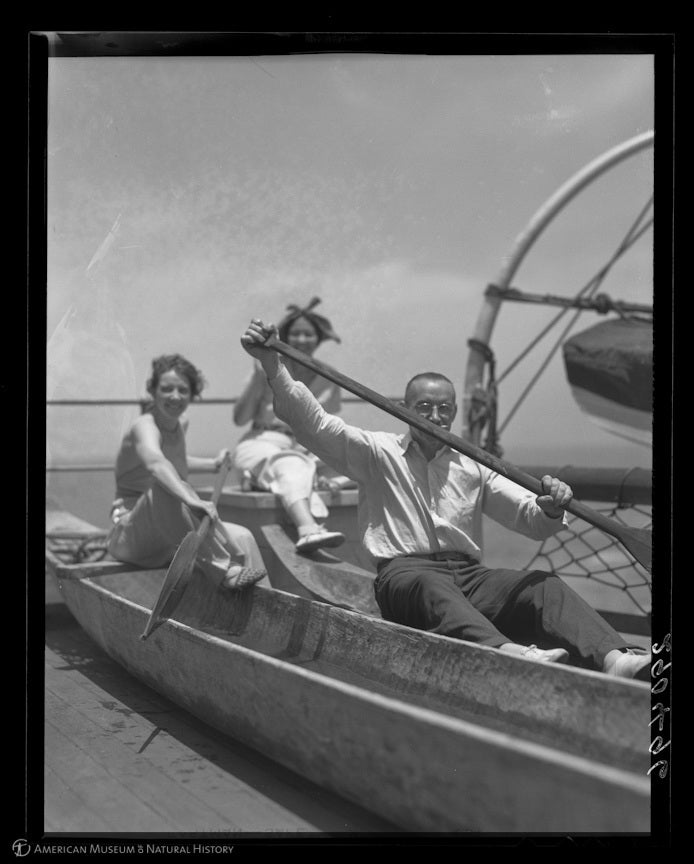
In the summer of 1937, soon after Bennett’s return from Peru, she had another, less lengthy excursion to make. She and her Barnacle barge co-owners had realized that the fetid Gowanus Canal was not ideal for swimming (the Canal is now a Superfund site) and got the idea to move the barge to the Long Island Sound. They got themselves voted into the Sands Point Yacht Club in Port Washington—the hamlet that inspired F. Scott Fitzgerald’s The Great Gatsby—and then found a captain to tow them.
The relocation from Gowanus to Plum Point took place on a hot Saturday in July. They brought along a 500-pound anchor (later adding 250 pounds). They bought its chain from a junkie named Mort. Providing tow duties was a Captain Smit of the Sylvester, who did the job for the cost of gas and oil. Though the launchman at the Sands Point Yacht Club was horrified when he saw the grungy barge, he finally gave them a spot. Other vessels in Manhasset Bay included the Guggenheim yacht and actor Ed Wynn’s.
The women spent warm evenings, mornings, and weekends on the barge for the next three years, commuting to and from Manhattan on the Long Island Railroad. A dugout canoe that Bennett bought in Colombia let them move around the Bay more easily; she wrote that it was easier getting it from South America to Manhattan than Manhattan to Long Island, which they eventually did by train.
On the Barnacle, they hosted dinner parties, befriended sailors and fishermen, swam, and, of course, stargazed. “Faint arches rose from the horizon and climbed high overhead,” Bennett wrote of the aurora borealis. “Tints of pink and green tinged the sky, and the fluttering streamers and rising arches were of breath-taking beauty. Some place on the other side of the world the sun was shining.”
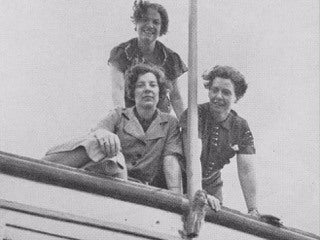
They also became used to visits from strangers—like “a baron and baroness from Washington” and “a radio commentator from Manhattan,” Dorothy Thompson. One visitor told them she’d heard the barge mentioned at a cocktail party in Chicago.
On Wednesday night, September 21, 1938, Bennett and a group of friends were at Pietro’s in midtown Manhattan with friends, eating spaghetti, while rain came down in sheets outside. The next morning a neighbor on Manhasset Bay called to say there had been a hurricane. It was the Great New England Hurricane of 1938.
Bennett rushed to the train, terrified about the Barnacle’s fate. The area was devastated—a boat in the road, one that had gone over a tree, wreckage of boat pieces and dock mixed together. She finally spotted the Barnacle—a mile away from its anchorage—near the Manhasset Yacht Club.
The next day, the Barnacle was towed back by a Coast Guard boat, accompanied by harbor police and the Department of Commerce. When the women went inside to inspect the damage, they found three dozen glasses still standing on the shelves. The hurricane had killed 60 people on Long Island and caused $6 million in damages.
That was the last season that Bennett, Linn, and Gibbons spent on the barge. Their four-year experiment had proven to be not only a ridiculous lark but also a wise investment. In an accounting diary that Bennett included in her book, she said the total costs to restore the boat, including launch fees at the club, were $92 per partner per season, about $1,500 today.
By 1939, Bennett was ready for a shift in career and left the museum for a job in publishing in Minnesota. She became sales and promotion manager at the University of Minnesota Press, where, in another Zelig-like turn, she worked on a bestselling biography of the Mayo brothers. After four years, she returned to New York for a publishing job that turned out to be a Ponzi scheme and then had a business lunch that led to a longtime, fortuitous creative collaboration.
Bennett’s lunch date was George Duplaix, a Frenchman who had developed a low-cost printing process and believed that high-quality children’s books could be sold for a quarter each, far less than the going rate of $2 to $3. He had sold the concept—Little Golden Books—to Simon & Schuster, and the first 12 books, including The Poky Little Puppy, The Little Red Hen, and Three Little Kittens had sold 1.5 million copies within five months. Duplaix hired Bennett as the editor of Golden Books (which went on to include Giant Golden Books and Little Golden Records).
The books became a juggernaut, launching the careers of such children’s-book all-stars as Margaret Wise Brown, Garth Williams, Edith Thacher Hurd, and Clement Hurd. Today about 2 billion copies have been printed.
Bennett herself authored several Golden Books, two stunning tomes that explain the world to children in a gentle, non-patronizing tone: The Golden Almanac, illustrated by Masha (1944), and The Golden Encyclopedia, illustrated by Cornelius De Witt (1946). Of her work on the almanac Bennett said, “[T]eaching children to ask questions is an important thing for them to learn, and having something at hand, when possible, that can give them at least the beginning answer is a godsend to parents, many of whom are not prepared to face the barrage of questions that young children ask about everything from morning till night.”
At first, librarians loathed the books, seeing their cardboard covers and low price points as outré. But they soon took off, whether for better or worse. As Bennett recalled, librarians “found that even in the inexpensive little twenty-five-cent book, they’d get at least twenty-eight readings, which is more than they sometimes got from their hard-bound books.” After the Walt Disney Company came on as a partner, Bennett toured the future Disneyland in a jeep with Walt as he pointed out the locations of attractions.
Two of her signature achievements at Golden Books were the Golden nature guides and regional guides (both started in 1949). Golden Books was an early pioneer in recorded books for children, launching Little Golden Records in 1948. Some of the albums included classical music. Predicting the future popularity of the Baby Einstein series, Bennett said, “People who don’t like to have short versions of books given to children … had the same approach to the records at first … until you could go into a nursery school or a first grade and hear the teacher say, ‘What would you like to do now?’ and have some six-year-old child say, ‘Can we have a little Bach?’”
At Golden Books, Bennett was known for her fidelity to art, no matter how high the cost. “A complex woman,” Leonard S. Marcus wrote of her in Golden Legacy: How Golden Books Won Children’s Hearts, Changed Publishing Forever, and Became an American Icon Along the Way, “she could be simultaneously generous and churlish, as when, responding to a poorly written unsolicited manuscript, she sent the hapless writer a dictionary by return mail, along with a rejection letter.”
Perhaps she was too finicky for the higher-ups; in 1954 Simon & Schuster vice president and sales director Albert Leventhal fired her. “Dorothy Bennett,” he was reported to have told his staff, “is a perfectionist, which is something that we can no longer afford. From now on, if a book is printed upside down, we will redo it—but nothing short of that!” (In the oral history, Bennett said she resigned.)
Wanting to further her education in anthropology, she went off to the American University of Beirut (where she took a Foreign Service Institute course on the Middle East) and London, where she took one of the last archeology courses taught by V. Gordon Childe at the University of London’s Institute of Archaeology. In an archaeology class she met Rosamund Gardner, a future child psychologist who would become her closest companion.
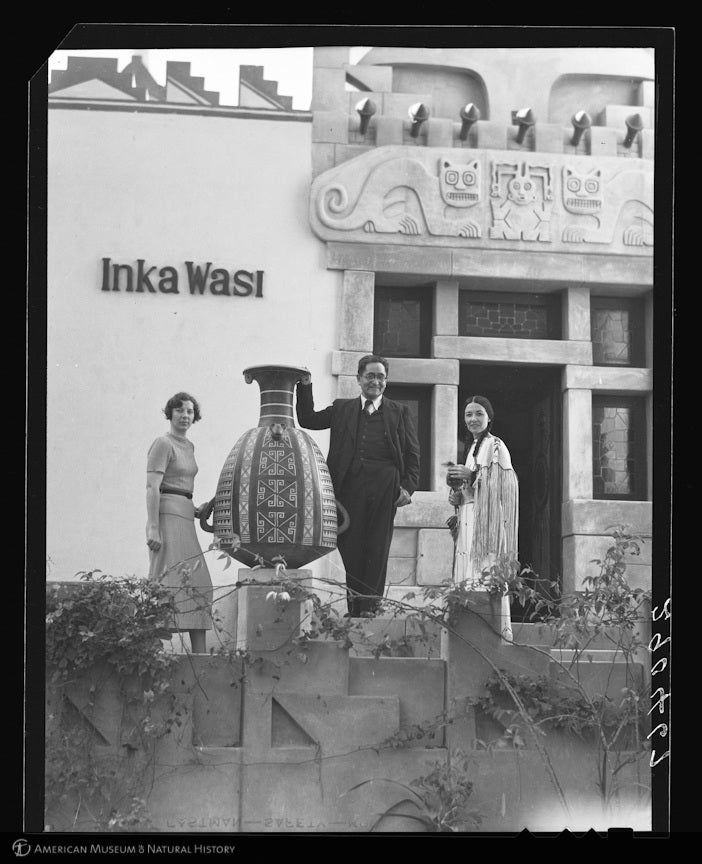
In the late 1950s Bennett took a job at the University of California, Berkeley as senior anthropologist at the Lowie Museum of Anthropology, organizing and moving collections into a new building. Gardner moved in with Bennett soon after. In late-life interviews Bennett referred to Gardner as her “friend.” Whatever their relationship status, they lived together or nearby, in two cities, for nearly four decades.
In the early ’60s Bennett helped launch a program teaching cultural diversity to the Berkeley Unified School District. Called EPOCH, Educational Programming of Cultural Heritage, it was a multimedia, interdisciplinary course involving slides, figurines, a library, sound, and film. It dissolved in the late ’60s due to funding problems.
The end of EPOCH appears to be the end of Bennett’s working life—though she was still collecting royalties from the Star Explorer as late as the 1970s. In the 1950s Bennett and Gardner had begun spending time in Taos, New Mexico, at first camping and eventually building a home from adobe, doing much of the work themselves.
Their circle of artistic friends included actor Erik Bauersfeld, Taos Book Shop owners Genevieve Janssen and Claire Morrill, and painters Milford Greer and Dorothy Brett. The women moved full-time to Taos in 1994. Bennett died in 1999 at the age of 89, Gardner in 2003.
On the final pages of Sold to the Ladies, Bennett reflected on her time on the high seas: “But for that impetuous purchase … [w]e might never have searched for the green oil for starboard lights or the magic red liquid for lamps to port. We might never have learned that an Irish hurricane is a dead calm, that ‘homeward stitches’ are makeshift repairs on the eve of a voyage. Our recollections are rich with the howl of the wind through the rigging; the breaking of waves on the bow; mornings in the utter freedom of life at sea; starlit nights reflected by a thousand jellyfish. We are content.”
